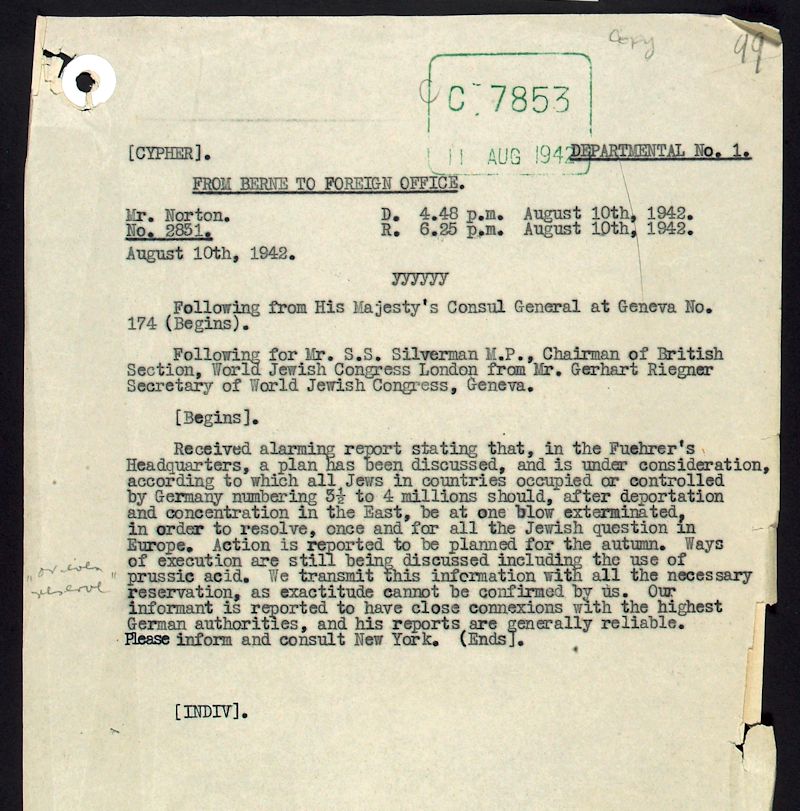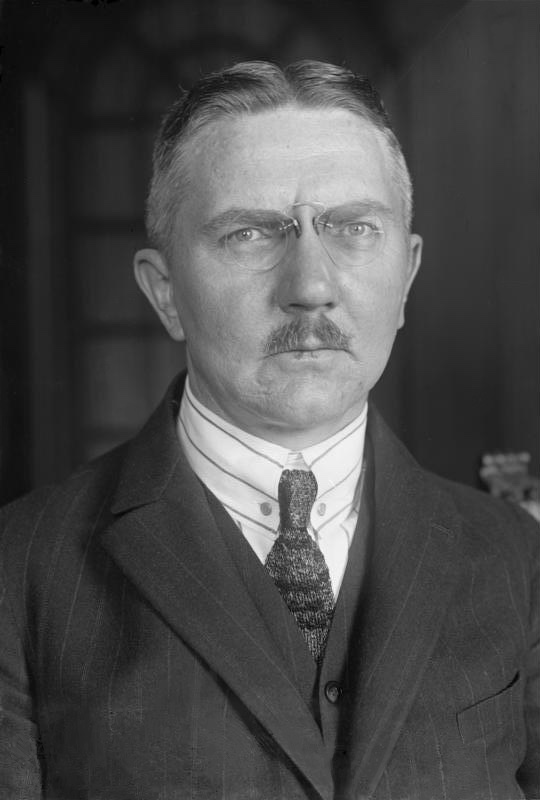|
Secret Meeting Of 20 February 1933
The Secret Meeting of 20 February 1933 (german: Geheimtreffen vom 20. Februar 1933) was a secret meeting held by Adolf Hitler and 20 to 25 industrialists at the official residence of the President of the Reichstag Hermann Göring in Berlin. Its purpose was to raise funds for the election campaign of the Nazi Party. The German elections were to be held on 5 March 1933. The Nazi Party wanted to achieve two-thirds majority to pass the Enabling Act and desired to raise three million Reichsmark to fund the campaign. According to records, 2,071,000 Reichsmarks () were contributed at the meeting. Together with the '' Industrial petition'', it is used as evidence to support the idea that big business played a central role in the rise of the Nazi Party. Participants The meeting was attended by the following business representatives:recording of Martin Blank for Paul Reusch printed in: #Ernst Brandi, chairman of ''Bergbauverein'' #Karl Büren, director general of Braunkohlen- und Briketti ... [...More Info...] [...Related Items...] OR: [Wikipedia] [Google] [Baidu] |
Günther Quandt
Günther Quandt (28 July 1881 – 30 December 1954) was a German industrialist who founded an industrial empire that today includes BMW and Altana, a car and chemical company, respectively. Between, 1921 and 1929 he was married to Magda Ritschel, later the wife of Nazi Propaganda Minister Joseph Goebbels. In the 1930s he joined the Nazi Party, becoming one of his strong financial supporters. His descendants were ranked as the wealthiest Germans by Manager Magazin in 2014. Early life He was born in Pritzwalk in Germany, the son of Emil Quandt (1849–1925). Emil had married in 1883 the daughter of a rich textile manufacturer (Reichswolle AG) and he took charge of the company in 1900. He had three siblings: Gerhard, Werner and a younger sister named Edith. Werner married Eleanor Quandt, who after the Second World War helped to protect her brother-in-law, Günther, from prosecution by the Allies. Günther's sister Edith married the owner of another textile company. During Worl ... [...More Info...] [...Related Items...] OR: [Wikipedia] [Google] [Baidu] |
Siemens & Halske AG
Siemens & Halske AG (or Siemens-Halske) was a German electrical engineering company that later became part of Siemens. It was founded on 12 October 1847 as ''Telegraphen-Bauanstalt von Siemens & Halske'' by Werner von Siemens and Johann Georg Halske. The company, located in Berlin-Kreuzberg, specialised in manufacturing electrical telegraphs according to Charles Wheatstone's patent of 1837. In 1848, the company constructed one of the first European telegraph lines from Berlin to Frankfurt am Main. Siemens & Halske was not alone in the realm of electrical engineering. In 1887, Emil Rathenau had established ''Allgemeine Elektrizitäts-Gesellschaft'' (AEG), which became a long-time rival. In 1881, Siemens & Halske built the Gross-Lichterfelde Tramway, the world's first electric streetcar line, in the southwestern Lichterfelde suburb of Berlin, followed by the Mödling and Hinterbrühl Tram near Vienna, the first electrical interurban tram in Austria-Hungary. 1882 saw the openi ... [...More Info...] [...Related Items...] OR: [Wikipedia] [Google] [Baidu] |
Vereinigte Stahlwerke AG
The Vereinigte Stahlwerke AG (VSt or Vestag, ''United Steelworks'') was a German industrial conglomerate producing coal, iron, and steel in the interbellum and during World War II. Founded in 1926, economic pressures (decreasing prices and excess capacities) led to the union of several companies, including Thyssen AG, , Rheinische Stahlwerke, Rhein-Elbe-Union GmbH, , , and . This group united of most German iron, steel and coal producers but did not include Hoesch AG, Krupp AG, Klöckner-Werke, , and Mannesmann.http://www.h-net.org/reviews/showrev.cgi?path=249411005252667 The company was headquartered in Düsseldorf. During the 1930s, VSt was one of the biggest German companies and, at times, also the largest steel producer in Europe. With up to about 250,000 workers, it produced about 40% of the steel and 20% of the coal produced in Germany. Chief executive officer (chief of the Vorstand) was initially Albert Vögler, until 1935. He was succeeded (1935−1943) as CEO by Ernst Poe ... [...More Info...] [...Related Items...] OR: [Wikipedia] [Google] [Baidu] |
Albert Vögler
Albert Vögler (8 February 1877 – 14 April 1945) was a German politician, industrialist and entrepreneur. He was a co-founder of the German People's Party, and an important executive in the munitions industry during the Second World War. Vögler was born to Karl and Berta Vögler in Essen. He studied mechanics and engineering at high school before graduating from the University of Karlsruhe in 1901 with a degree in mechanical engineering. Between 1901 and 1910 he worked as a senior engineer at the Dortmunder Steel Works, and then became a member of the executive committee in the Deutsch-Luxemburgische Bergwerks- und Hütten-AG mining company. Upon the death in 1924 of the founder, Hugo Stinnes, Vögler became manager. In 1918, with Gustav Stresemann, he was involved in the founding of the German People's Party (DVP) in the Weimar Republic. He criticised the policies of Joseph Wirth who signed agreements with France in accordance with Germany's submission to the French occupat ... [...More Info...] [...Related Items...] OR: [Wikipedia] [Google] [Baidu] |
Ernst Tengelmann
Ernst Tengelmann (14 January 1870 – 30 March 1954) was a German entrepreneur. From 1912 he was Director-General of the Essener Steinkohlenbergwerke AG and CEO of Gelsenkirchener Bergwerks-AG. In addition to Carl Hold and Gustav Knepper he was one of the most influential mining figures in 1930s Ruhr Valley. In the 1920s Tengelmann was an active member of the German People's Party, but in 1930 he joined the Nazi party and participated in the Secret Meeting of 20 February 1933 The Secret Meeting of 20 February 1933 (german: Geheimtreffen vom 20. Februar 1933) was a secret meeting held by Adolf Hitler and 20 to 25 industrialists at the official residence of the President of the Reichstag Hermann Göring in Berlin. Its pu ... where he gave the party considerable financial support. His sons, Walter and Wilhelm also worked actively for the Nazi party. Friedrich-Ebert-Stiftung (Hrsg): ''Archiv für Sozialgeschichte'', Verlag Neue Gesellschaft, 1975 References 1870 births 19 ... [...More Info...] [...Related Items...] OR: [Wikipedia] [Google] [Baidu] |
Rhenish-Westphalian Coal Syndicate
The Rhenish-Westphalian Coal Syndicate ( ger.: Rheinisch-Westfälisches Kohlen-Syndikat -RWKS) was a cartel established in 1893 in Essen bringing together the major coal producers in the Ruhr. The syndicate was set up as coal producers moved towards using shipping rather than railways to deliver their coal to Rotterdam. The cartel co-operated with the Dutch Coal Trade Union, to whom they gave the sole distribution rights for Westphalian coal. Daniël George van Beuningen of the Steenkolen Handels Vereniging was a leading figure in this relationship, greatly increasing the amount of coal imported to Rotterdam and resulting in the cost of using Rhine based barges dropping as their greater use also stimulated technical innovation. This arrangement led to Rotterdam becoming not just the leading coal transhipment port in the Netherlands ) , anthem = ( en, "William of Nassau") , image_map = , map_caption = , subdivision_type = Sovereign state , subdivision_name = Kingdom ... [...More Info...] [...Related Items...] OR: [Wikipedia] [Google] [Baidu] |
Hoesch AG
Hoesch AG was an important steel and mining company with locations in the Ruhr area and Siegen. In 1871, Hoesch was founded by Leopold Hoesch. In 1938, Hoesch employed 30,000 people. In 1972, the prominent steel producer merged with the Dutch Hoogovens steel company to form Estel. It was formerly the largest employer in Dortmund. In 1982, the merger with Dutch company Estel was stopped by Detlev Karsten Rohwedder, and Hoesch became again an own company. In 1991, German competitor Krupp bought Hoesch. August 28, 1992 Nazi involvement represented Hoesch AG at the[...More Info...] [...Related Items...] OR: [Wikipedia] [Google] [Baidu] |
Eduard Schulte
Eduard Schulte ( 4 January 1891 in Düsseldorf – 6 January 1966 in Zürich) was a prominent German industrialist. He was one of the first to warn the Allies and tell the world of the Holocaust and systematic exterminations of Jews in Nazi Germany occupied Europe. During World War I, Schulte led the department for soap production within the War Ministry. Due to his career as a manager in the 1920s to 1940s, he had frequent contact with high German government and military officials, as well as other industrialists who had access to important information. Giesche’s Erben Company Bergwerksgesellschaft Georg von Giesche's Erben (Giesche's Erben) was a German-owned company and a successor to the huge industrial properties of the aristocratic Giesche family. In 1922, a major part of Giesche's Erben properties located in Silesia were included in the territory of the newly designated Republic of Poland. Giesche's Erben had created Giesche Spolka Akcyjna (Giesche) in order to consoli ... [...More Info...] [...Related Items...] OR: [Wikipedia] [Google] [Baidu] |
IG Farben
Interessengemeinschaft Farbenindustrie AG (), commonly known as IG Farben (German for 'IG Dyestuffs'), was a German chemical and pharmaceutical conglomerate (company), conglomerate. Formed in 1925 from a merger of six chemical companies—BASF, Bayer, Hoechst AG, Hoechst, Agfa-Gevaert, Agfa, Chemische Fabrik Griesheim-Elektron, and Weiler-ter-Meer, Chemische Fabrik vorm. Weiler Ter Meer—it was seized by the Allies after World War II and divided back into its constituent companies. IG Farben was once the largest company in Europe and the largest chemical and pharmaceutical company in the world. IG Farben scientists made fundamental contributions to all areas of chemistry and the pharmaceutical industry. Otto Bayer discovered the polyaddition for the synthesis of polyurethane in 1937, and three company scientists became List of Nobel laureates, Nobel laureates: Carl Bosch and Friedrich Bergius in 1931 "for their contributions to the invention and development of chemical high pre ... [...More Info...] [...Related Items...] OR: [Wikipedia] [Google] [Baidu] |
Georg Von Schnitzler
Georg August Eduard ''Freiherr'' von Schnitzler (29 October 1884, in Cologne – 24 May 1962, in Basel) was a member of the board at IG Farben and a Nazi war criminal. Early years Schnitzler studied law at a number of universities, eventually completing his doctorate at the University of Leipzig in 1907. After a year's travel he went to work for Bankhaus J.H. Stein of Cologne. He married Lily von Mallinckrodt in 1910. His new wife was a noted figure in German high society and Baron von Schnitzer himself was noted for his immaculate dress sense and expensive tastes in wine and the arts. Corporate career In 1912 he moved to Hoechst AG, Farbwerke Hoechst, a company where his father held a leading position, and worked as a salesman of dyes in Munich for them. He joined the board as an alternate member in 1920 and achieved full membership in 1924. The company merged with IG Farben in 1925 and he was appointed an alternate member of their board, eventually becoming manager of their sales ... [...More Info...] [...Related Items...] OR: [Wikipedia] [Google] [Baidu] |
Hjalmar Schacht
Hjalmar Schacht (born Horace Greeley Hjalmar Schacht; 22 January 1877 – 3 June 1970, ) was a German economist, banker, centre-right politician, and co-founder in 1918 of the German Democratic Party. He served as the Currency Commissioner and President of the Reichsbank under the Weimar Republic. He was a fierce critic of his country's post-World War I reparations obligations. He served in Adolf Hitler's government as President of the Central Bank (''Reichsbank'') 1933–1939 and as Minister of Economics (August 1934 – November 1937). While Schacht was for a time feted for his role in the German "economic miracle", he opposed elements of Hitler's policy of German re-armament insofar as it violated the Treaty of Versailles and (in his view) disrupted the German economy. His views in this regard led Schacht to clash with Hitler and most notably with Hermann Göring. He resigned as President of the Reichsbank in January 1939. He remained as a Minister-without-portfolio, and ... [...More Info...] [...Related Items...] OR: [Wikipedia] [Google] [Baidu] |





